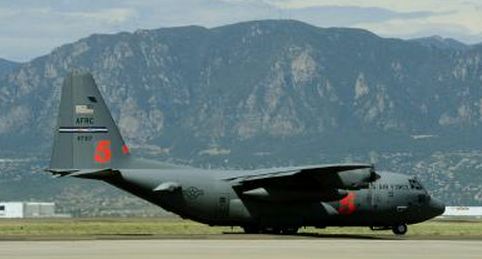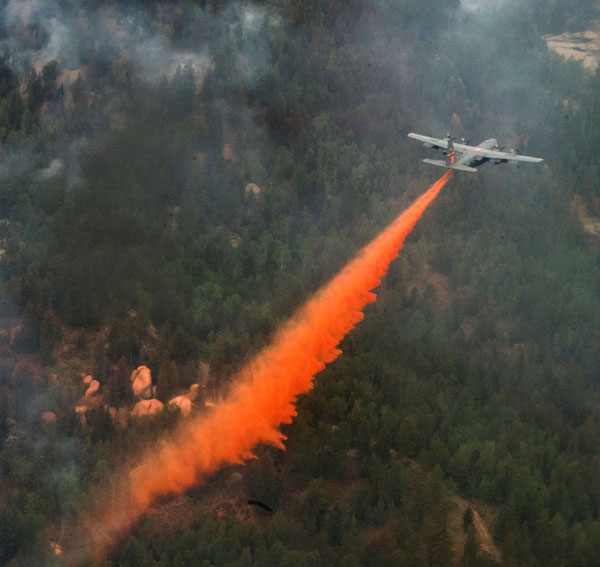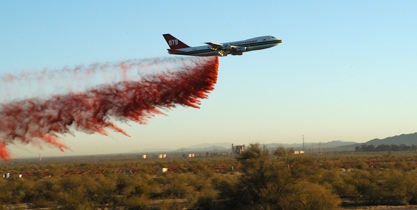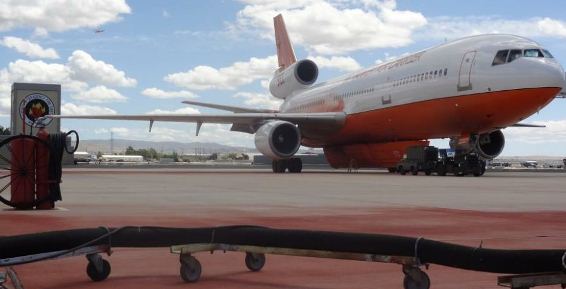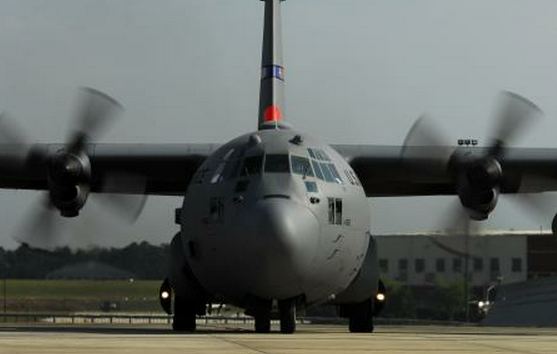
The United States Northern Command and the U.S. Forest Service have released more information about yesterday’s South Dakota crash of a C-130 aircraft outfitted with a Modular Airborne FireFighting System (MAFFS), enabling it to function as an air tanker.
The USFS said there were two survivors and four fatalities. Yesterday Black Hills FOX News reported that the two survivors were picked up by helicopter from the crash site and flown to the Custer airport. From there one was flown by a life flight helicopter to a hospital in Rapid City and the other went by ground ambulance to the hospital.
The C-130 was identified as MAFFS #7 from the North Carolina Air National Guard’s 145th Airlift Wing based at Charlotte-Douglas International Airport and was working on the White Draw Fire about five miles northeast of Edgemont in the southwest corner of South Dakota. The accident, which occurred at 6:00 or 6:30 p.m. MT, is, of course, being investigated, and the cause has not been released, but the USFS provided some information:
A BLM ASM [Aerial Supervision Module] platform was also engaged as a lead [plane] with the C130 when the accident occurred. The ASM/Lead experienced a severe downdraft while approaching the intended retardant drop zone with the C130 in trail. This is being investigated by the USFS as a separate Incident With Potential.
As sometimes happens after an aircraft accident, the remaining seven MAFFS-equipped C-130s are on an operational hold. The fleet will spend the day to get the MAFFS crews together to “reflect, reset and review,” said Col. Jerry Champlin, 153rd Air Expeditionary Group commander. “We all need to make sure our crews and planes will be ready to re-engage in the mission safely,” he added.
I searched some air tanker accident files, and was not able to find any record of fatal crashes of military-operated MAFFS air tankers, which were created after the record-breaking 1970 fire season.
The White Draw fire has burned 4,200 acres and is 30% contained. Monday morning there was so much wildfire smoke over a large portion of southwest South Dakota that two CV-580 air tankers on loan from Canada were not able to execute a request to drop retardant on the Parker Peak fire, a new fire about two miles east of the White Draw fire. They had to return to Rapid City and jettison the retardant before landing.
On Sunday, in addition to dropping on the White Draw fire, MAFFS air tankers were also working on the Oil Creek fire near Newcastle, WY, 39 miles northwest of the White Draw fire.
MAFFS #7 was one of four MAFFS ships scheduled to relocate on Monday from Peterson Air Force base at Colorado Springs to Wyoming Air National Guard’s base in Cheyenne, in order to reduce the turn-around time for reloading with retardant while working the fires in Wyoming and South Dakota.
The video below shows some of the operations at the Custer airport related to the accident.
(The video is no longer available.)
The one-minute video below includes Black Hills Fox’s Sunday night coverage of the crash.
(The video is no longer available.)
Our sincere condolences go out to the families and other members of the North Carolina Air National Guard.


